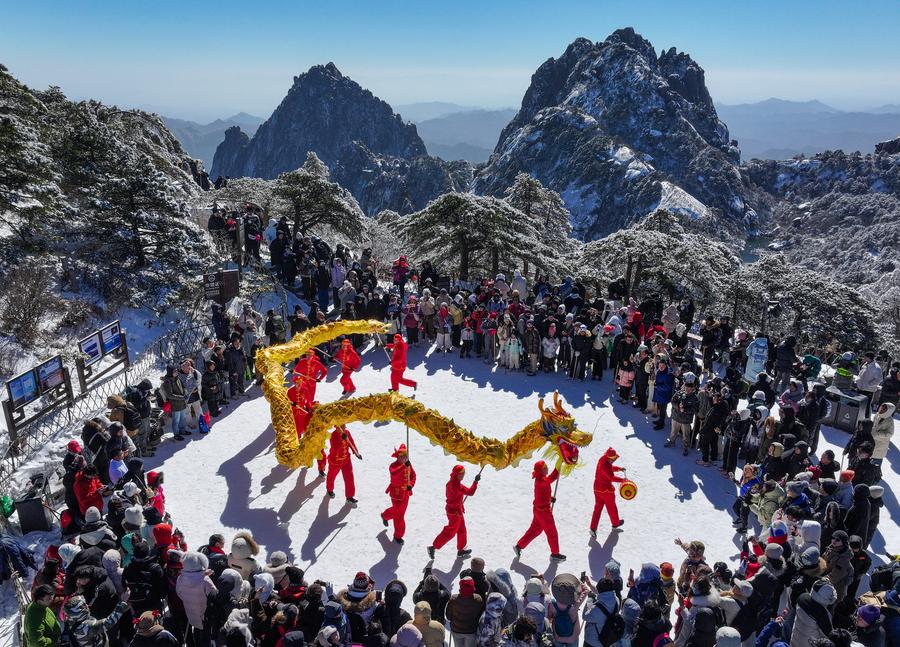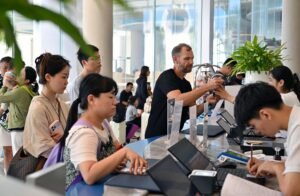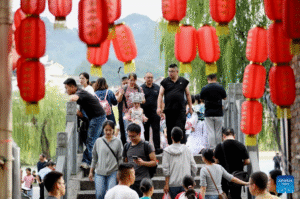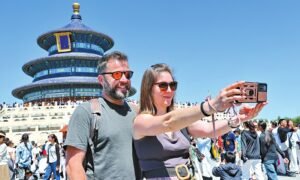Chinese celebrate Spring Festival with traditions, travels , shopping spree

* For Chinese across the world, the Spring Festival is a time for family reunions, festive traditions, holiday shopping and diverse cultural and tourism activities.
* In addition to local festivities, many are venturing farther afield to make the most of the eight-day Spring Festival holiday.
* Spring Festival serves as the most direct cultural window to understand the Chinese people.
BEIJING, Jan. 28 (Xinhua) — With traditional fairs and shopping and travel booms over this year’s extended holiday, China is about to ring in the Spring Festival of the Year of the Snake, the first since its inclusion into the UNESCO intangible cultural heritage list.
For Chinese across the world, the Spring Festival is a time for family reunions, festive traditions, holiday shopping and diverse cultural and tourism activities. This year, it falls on Jan. 29 with hundreds of millions of people traveling to reunite with families in the world’s largest annual human migration.
Celebrations highlight both traditional and modern elements, from temple fairs, lantern displays, lion dances and intangible cultural heritage bazaars to village galas, light and drone shows, museum exhibitions, and travels at home and abroad.
This year, festive glee and activities are further boosted by the UNESCO recognition, pro-consumption policies and the extension of the traditional seven-day holiday by an extra day.
This year, many cities are holding more traditional festive activities, motivated by the inscription of the Spring Festival on UNESCO’s Representative List of the Intangible Cultural Heritage of Humanity in December. The southwestern megacity of Chongqing has planned more than 100 intangible cultural heritage exhibitions, bazaars and performances during the holiday.
For centuries, shopping has been a crucial part of Spring Festival preparations: from nice food to new clothes and carefully chosen gifts.
Following the UNESCO recognition, Chinese consumers also appear to be particularly interested in goods with a cultural festival flair.
In recent years, the Spring Festival shopping lists have included more imported goods, reflecting Chinese people’s rising purchasing power and growing appetite for imported quality goods.
In addition to local festivities, many are venturing farther afield to make the most of the eight-day Spring Festival holiday.
The extended holiday has given a boost to the travel industry. While tourist cities such as Shanghai, Beijing, Guangzhou, Hangzhou and Chengdu are attracting large numbers of holidaymakers, smaller cities are also getting more travelers who wish to savor celebrations with local flavors, according to Fliggy, a leading online travel agency.
Thanks to China’s further easing of visa policies, many Chinese cities are also witnessing an influx of international visitors, with many eager to experience the festival traditions.
“The UNESCO heritage status gives Spring Festival worldwide recognition and increases its appeal to international tourists,” said Zhou Huijie, an analyst at Trip.com research institute.
Trip.com Group has estimated that inbound bookings would jump by 203 percent during the Spring Festival, with tourists from the Republic of Korea, Malaysia, Singapore, Japan, the United States, Australia, Thailand and Britain topping the list.
Spring Festival serves as the most direct cultural window to understand the Chinese people and it is also a traditional festival with the most Chinese cultural characteristics, said Feng Jicai, a renowned Chinese writer who has long championed intangible cultural heritage protection.
Jan. 29 , 2025
Image : An aerial drone photo taken on Jan. 27, 2025 shows a dragon dance performance at the Huangshan Mountain scenic area in east China’s Anhui Province. (Photo by Shi Yalei/Xinhua)














